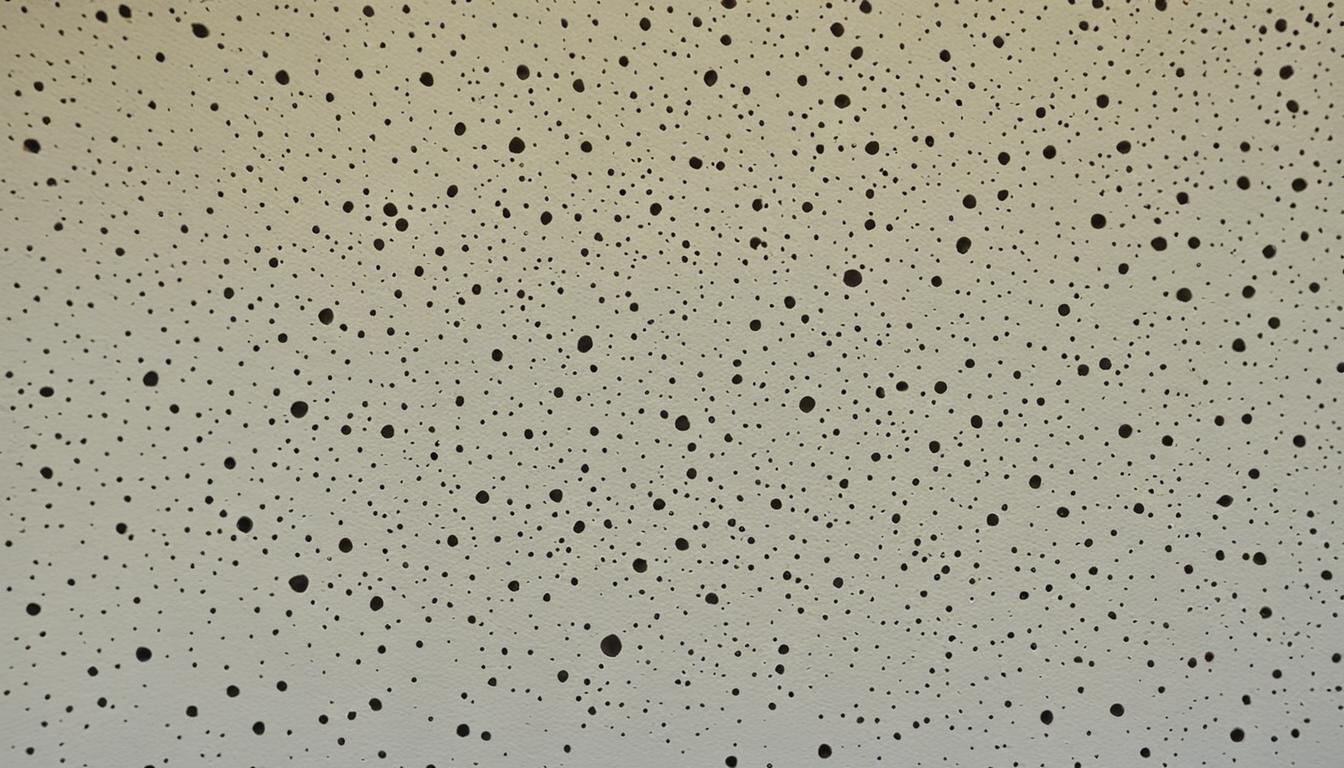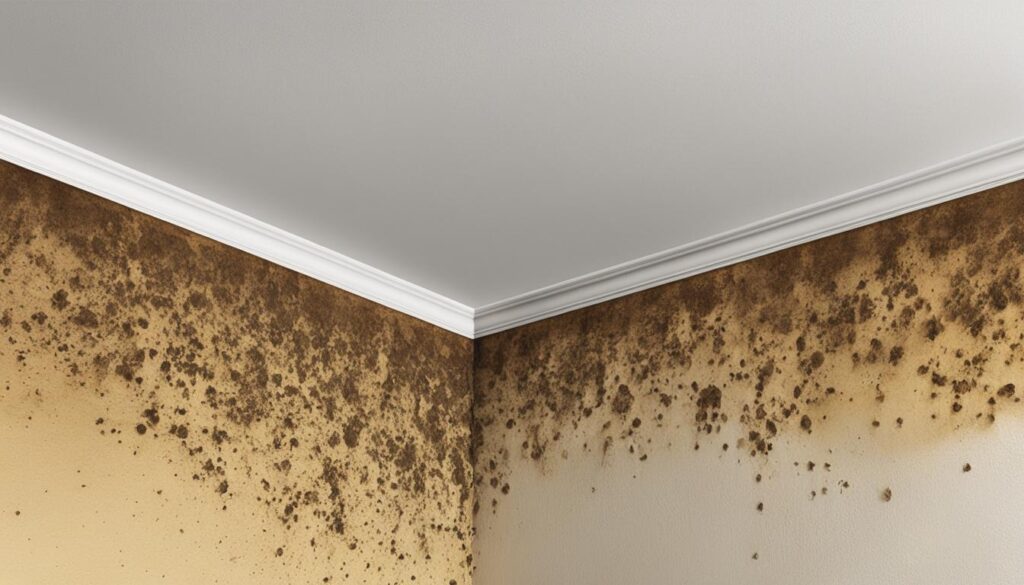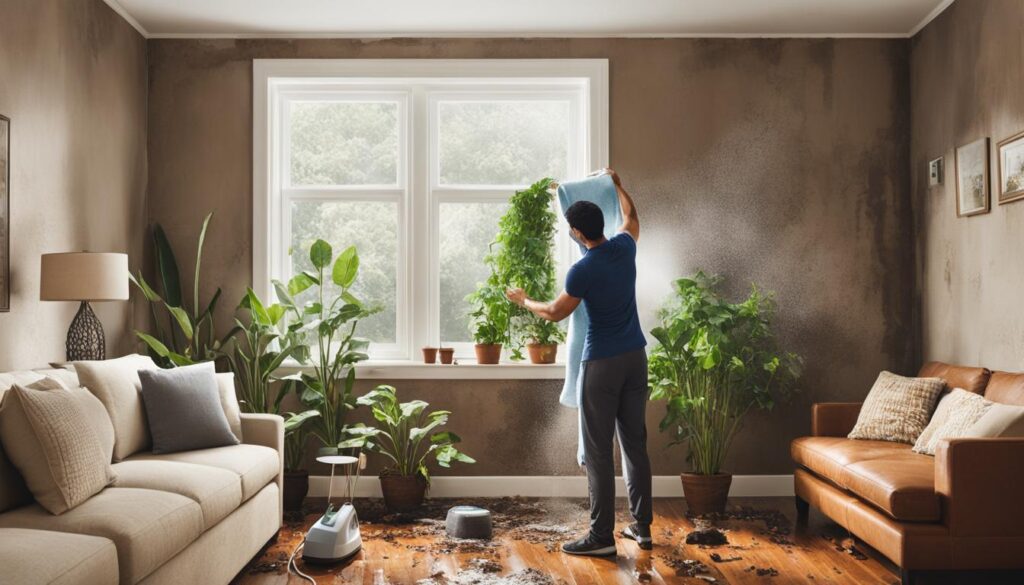
Understanding Brown Mold in Your Home
Brown mold is a type of fungus that can grow inside your home, causing health issues and structural damage if not addressed promptly. It thrives in moist and humid environments and can spread quickly if left unattended. In this section, we will provide a comprehensive understanding of brown mold, including its causes, symptoms, and effective removal strategies. By learning about brown mold, you can create a safe and healthy living environment.
Key Takeaways
- Brown mold is one of the most common types of mold that can grow inside homes.
- It is important to recognize brown mold symptoms such as respiratory issues, skin irritation, and headaches.
- Preventing brown mold growth includes reducing moisture levels and improving ventilation.
- Professional mold remediation services can effectively remove severe brown mold infestations.
- DIY techniques can be used for minor brown mold infestations, but consulting with experts is always recommended.
What is Brown Mold?
Brown mold, also known as Stachybotrys chartarum, is a type of mold commonly found in damp, humid environments with poor ventilation. It appears as a slimy, greenish-black growth and can even have a brown or grayish color. Unlike other types of mold that may develop on surfaces, brown mold usually grows on materials with high cellulose content, such as wood, paper, and fabric.
Brown mold is known for producing mycotoxins that can cause various health problems, including respiratory issues, skin irritation, and neurological symptoms. Therefore, it’s essential to take prompt action when brown mold is detected in your home.
“Brown mold usually grows on materials with high cellulose content, such as wood, paper, and fabric.”
Common Causes of Brown Mold
Brown mold is a common type of mold found in homes. It can grow in any area that has high humidity levels, poor ventilation, and moisture buildup. Brown mold thrives in damp conditions, making bathrooms and basements prone to infestations.
The most common causes of brown mold growth are:
- Poor Ventilation: A lack of proper ventilation can lead to high humidity levels and stagnant air, providing an ideal environment for brown mold to grow.
- Water Leaks: Water leaks from pipes, ceilings, or roofs can create a moist environment that is favorable for mold growth.
- High Humidity: Areas with high moisture levels, like kitchens and bathrooms, are particularly vulnerable to mold growth.
- Flooding: Flooding can cause extensive water damage and create a breeding ground for mold.
If you detect brown mold in your home, it’s essential to locate and address the underlying issues to prevent further mold growth.
Recognizing Brown Mold Symptoms
Brown mold can have a detrimental impact on your health and cause various symptoms. Being aware of the signs of brown mold exposure can help you take the necessary precautions to keep yourself and your family safe.
Common brown mold symptoms include:
- Respiratory issues: Brown mold spores can cause respiratory problems like wheezing, coughing, and difficulty breathing. If you experience these symptoms, it is essential to seek medical attention.
- Allergic reactions: In some cases, exposure to brown mold can trigger an allergic reaction. Symptoms may include itchy eyes, runny nose, sneezing, and skin irritation.
- Headaches: Prolonged exposure to brown mold can cause headaches and migraines.
- Fatigue: Brown mold exposure can lead to fatigue, lethargy, and weakness.
If you notice any of these symptoms, it is crucial to seek professional mold remediation services to prevent further exposure and health complications.

Health Risks of Brown Mold
Prolonged exposure to brown mold can pose significant health risks.
When inhaled, brown mold spores can cause respiratory issues, such as asthma or bronchitis. People with weakened immune systems, respiratory problems, or allergies are particularly vulnerable to these symptoms.
Other common symptoms of brown mold exposure include nasal congestion, coughing, sneezing, skin irritation, and headaches.
If you suspect you have a brown mold problem in your home, it’s essential to address it promptly to avoid any adverse health effects.
Professional mold remediation services may be required, depending on the severity of the mold growth and the potential risks to health. However minor infestations can often be treated with safe and effective DIY remedies.
Protecting Your Health from Brown Mold Exposure
Preventing brown mold growth in your home is the best way to protect your family’s health from potential exposure. Here are some steps you can take:
- Ensure proper ventilation in all rooms, especially in damp areas like bathrooms and kitchens.
- Check your home regularly for water leaks or moisture problems.
- Keep your home clean and dry, especially in areas with high humidity.
- Use mold-resistant materials in your home construction or renovation projects.
- If you suspect mold growth, avoid disturbing it by scraping, brushing, or vacuuming.
By implementing these prevention measures, you can help keep your home Mold-free and your family safe from brown mold exposure.
Removing Brown Mold Safely
Brown mold can be a health hazard for people who are exposed to it for prolonged periods. It is essential to remove it safely and completely to prevent further damage and contamination. Below are some effective methods for safely removing brown mold from your home:
DIY Solutions
If you are dealing with a small area of brown mold growth, you may be able to remove it yourself. Here are some common DIY solutions:
- Wear protective gear such as gloves, goggles, and a mask to avoid inhalation or skin contact with the spores.
- Clean the affected area with a solution of bleach and water.
- Use a HEPA vacuum to remove any remaining mold spores.
Professional Mold Remediation Services
If your brown mold problem is more extensive, it’s best to call a professional mold remediation company. Licensed professionals have the experience, equipment, and expertise necessary to remove mold safely and effectively. They can also provide recommendations to prevent future mold growth.
During the mold remediation process, professionals will:
- Conduct a thorough inspection of your home to identify the source of the mold problem.
- Prepare the area by sealing off contaminated areas to avoid cross-contamination and spreading of mold spores.
- Remove mold growth by utilizing specialized equipment and techniques.
- Clean and disinfect all affected areas.
Overall, for safe brown mold removal, it’s essential to consult with professional mold remediation service providers for large-scale remediation. However, if you have a small infestation, you may be able to use DIY techniques to eradicate the mold. Always remember to utilize proper protective gear when dealing with brown mold to avoid exposure to health hazards.
Preventing Brown Mold Growth
Brown mold growth is a common problem in many households, but it’s usually preventable with some simple steps.
Maintain Indoor Humidity Levels
One of the most important steps you can take to prevent brown mold growth is to maintain optimal indoor humidity levels. Ideally, your home’s humidity should be between 30% and 50%. Use a dehumidifier in damp areas such as the basement, bathroom, and laundry room. Make sure to empty and clean the dehumidifier’s collection bucket frequently to avoid mold growth.
Improve Ventilation
Inadequate ventilation is a leading cause of brown mold growth. Ensure proper ventilation throughout your home by keeping doors open, using exhaust fans, and opening windows. If you’re not getting enough ventilation, consider installing an air exchange system or other alternative ventilation equipment.
Repair Leaks
Any leaks in your home, from a small drip to a major leak, can cause brown mold growth. Be sure to repair any leaks in pipes, roofs, or walls as soon as possible. Regularly inspect your home for signs of water damage, such as peeling paint or sagging walls, and take action immediately.
Keep Indoor Surfaces Dry
Another effective way to prevent mold growth is to ensure that indoor surfaces remain dry. Dry wet areas immediately and wipe down surfaces frequently, especially in areas that are prone to moisture such as the bathroom and kitchen. Use a squeegee to remove moisture from shower walls and tubs and avoid leaving damp towels or mats on the floor.
By taking these preventive measures, you can significantly reduce the risk of brown mold growth in your home and maintain a healthy living environment.

Professional Mold Remediation Services
Dealing with a brown mold infestation is not a task for the inexperienced. It requires professional expertise to remove mold safely and comprehensively. Mold remediation specialists have the experience, training, and equipment necessary to provide effective mold removal and remediation services.
When you choose to work with a professional mold remediation service, you can rest assured that your mold problem will be addressed correctly and safely. Here are some benefits of hiring professional mold remediation services:
- Thorough mold inspection to determine the extent of the infestation
- Effective and safe mold removal using industry-standard equipment and techniques
- Identification and remediation of the underlying cause of mold growth
- Advice and recommendations for preventing mold regrowth in the future
There are several steps involved in the mold remediation process, including:
- Assessment – Identification of the extent and type of mold growth
- Containment – Isolation of the mold-infested area to prevent further contamination
- Removal – Safe and effective removal of mold and contaminated materials
- Cleaning – Detailed cleaning and sanitization of the affected area
- Testing – Verification of the effectiveness of the remediation process
Professional mold remediation services are particularly important when dealing with brown mold infestations, as this type of mold can be particularly hazardous to you and your family’s health. Hiring professionals to tackle severe mold infestations ensures the safety and well-being of you and your loved ones.
Don’t wait until it’s too late. Contact a professional mold remediation service today to address your brown mold infestation and ensure a safe and healthy living environment.
DIY Remediation Techniques for Brown Mold
If you have identified a small brown mold infestation in your home, you may be able to remove it yourself with some simple techniques. Keep in mind that larger infestations or those in hard-to-reach areas should be handled by professional mold remediation services for safe and effective removal.
Here are some cost-effective DIY techniques for brown mold removal:
- Washing with vinegar: Mix equal parts of white vinegar and warm water in a spray bottle. Apply the solution to the affected surfaces and leave it for an hour before rinsing with water and drying.
- Baking soda: Create a paste by mixing baking soda with water. Apply it to the moldy area, leave for an hour, then rinse with water and dry.
- Hydrogen peroxide: Mix hydrogen peroxide and water in a 1:1 ratio in a spray bottle. Spray it on the moldy area, leave for an hour, then rinse with water and dry.
- Tea tree oil: Mix two teaspoons of tea tree oil with two cups of water in a spray bottle. Spray it on the affected surfaces, leave for an hour, then wipe with a clean cloth.
After cleaning, ensure the area is dry and well-ventilated to prevent mold growth. Remember to wear proper protective gear such as gloves, goggles, and a mask during the cleaning process.
Seeking Expert Mold Assessment and Prevention
While effective mold prevention can go a long way towards mitigating brown mold growth in your home, sometimes expert assistance is necessary. Professional mold assessment and prevention services can help identify potential mold issues early on and implement effective preventive measures.
If you suspect brown mold growth in your home, it is best to call in a professional. These experts have the necessary experience and equipment to detect mold growth that is not visible to the naked eye. They can also provide a thorough assessment of your home’s moisture levels, identify any underlying causes of mold growth, and recommend effective preventive measures to keep your home mold-free.
Professional mold remediation services can also provide effective solutions for removing brown mold from your home safely. From applying antimicrobial solutions to specialized cleaning techniques, these experts can tackle even the most severe mold infestations while ensuring the health and safety of your family.
By seeking the help of a professional mold remediation company, you can achieve long-lasting mold prevention while enjoying peace of mind and a healthy living environment.
Conclusion
As we have learned, brown mold is a common type of mold that can cause a host of health issues if left untreated. It is crucial to understand its causes, symptoms, and effective removal strategies to create a safe and healthy living environment. In some cases, professional mold remediation services may be necessary to tackle severe infestations.
Prevention is the key to keeping your home mold-free. By controlling moisture levels, improving ventilation, and addressing any underlying issues, you can avoid mold growth and maintain a healthy living space. Consulting with experts for mold assessment and prevention services can also help identify potential issues early on.
At FixMold, we offer reliable mold assessments, prevention, and remediation services to help you tackle any mold-related issues in your home. Contact us at 305-465-6653 for more information on how we can assist you in ensuring a safe and healthy living environment.
FAQ
What is brown mold?
Brown mold is a type of fungus that commonly grows in damp and humid environments. It is characterized by its brown or tan color and can appear as patches or spots on walls, ceilings, and other surfaces.
How does brown mold grow?
Brown mold thrives in areas with excessive moisture and poor ventilation. It can grow on organic materials such as wood, paper, and fabric. Lack of proper moisture control and high humidity levels contribute to brown mold growth.
What are the symptoms of brown mold exposure?
Symptoms of brown mold exposure may include respiratory issues, such as coughing, wheezing, and shortness of breath, as well as allergic reactions, skin irritation, and sinus congestion. If you experience these symptoms, it is important to seek medical attention.
Are there any health risks associated with brown mold?
Prolonged exposure to brown mold can pose health risks, especially for individuals with respiratory conditions, allergies, or weakened immune systems. It can exacerbate existing symptoms and lead to respiratory infections and other health complications.
How can I safely remove brown mold from my home?
Safely removing brown mold involves wearing protective gear, containing the affected area, and using appropriate cleaning solutions to scrub the mold off surfaces. It is recommended to consult professionals for extensive mold removal.
What can I do to prevent brown mold growth?
Preventing brown mold growth involves addressing moisture issues, improving ventilation, and reducing humidity levels in your home. Regularly inspecting and maintaining plumbing, roof, and HVAC systems can also help prevent mold growth.
When should I consider professional mold remediation services?
It is advisable to hire professional mold remediation services for severe brown mold infestations, extensive mold growth, or if you are unsure about the extent of the problem. Professionals have the expertise and equipment to safely and effectively remove mold from your home.
Are there any do-it-yourself remedies for brown mold removal?
While DIY remedies can be effective for small-scale brown mold removal, caution should be exercised. Use protective equipment, such as masks and gloves, and follow proper cleaning procedures. For larger or persistent mold issues, it is best to seek professional assistance.




